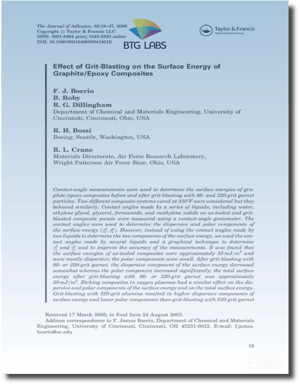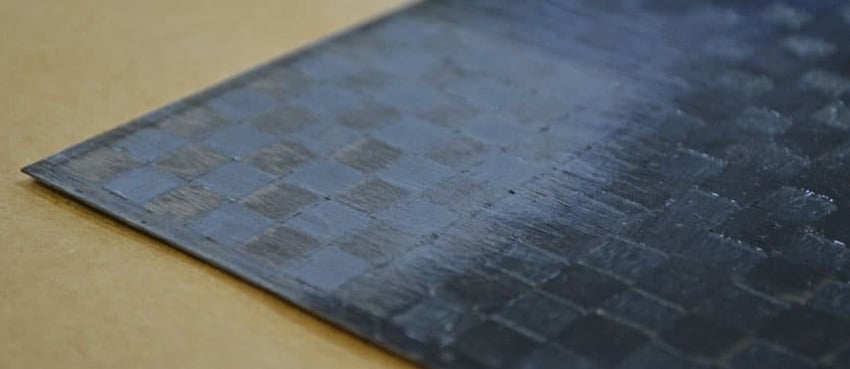Composites consisting of polymer matrices reinforced with graphite fibers are attractive materials for structural applications in the aerospace industry because they are light in weight and have a high strength-to-weight ratio.
Adhesive Bonding Is the Preferred Method for Joining Composites
- Eliminates the need for cutting holes in the composites that would damage load-bearing fibers
- Removes stress concentrations that would be associated with mechanical fasteners
- Stresses to be distributed over large areas
In addition, adhesively bonded structures frequently have a lower weight than similar structures that are assembled using mechanical fasteners.
Adhesives used for joining composites fall into two broad classes: high-temperature curing film adhesives and room-temperature curing paste adhesives.
 Although high-temperature curing film adhesives are less sensitive to composite surface preparation than room-temperature curing paste adhesives, the surface-preparation procedure is always critical to achieving a strong bond. Composite surfaces are frequently contaminated with release agents that are used to prevent the adhesion of the composites to the molds in which they are cured. The presence of a release agent on the surface lowers the surface energy of a composite and makes it difficult for the room-temperature cure systems to wet the surface.
Although high-temperature curing film adhesives are less sensitive to composite surface preparation than room-temperature curing paste adhesives, the surface-preparation procedure is always critical to achieving a strong bond. Composite surfaces are frequently contaminated with release agents that are used to prevent the adhesion of the composites to the molds in which they are cured. The presence of a release agent on the surface lowers the surface energy of a composite and makes it difficult for the room-temperature cure systems to wet the surface.
As a result, surface engineering processes must frequently be applied to polymer composites to remove mold-release agents from their surfaces and to increase their surface energies. These surface engineering processes may be as simple as rinsing the surface with a solvent. However, they may be much more complex, removing release agents, roughening the surface to introduce topographical features that allow for mechanical interlocking between an adhesive and the surface, and changing the surface chemistry of the composites by introducing new functional groups.
Download the Paper: Effect of Grit-Blasting on the Surface Energy of Graphite/Epoxy Composites

